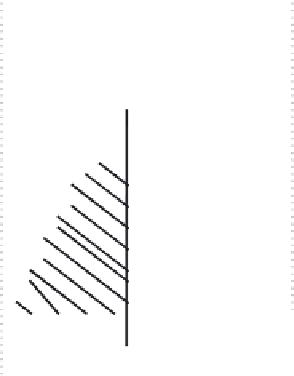Information Technology Reference
In-Depth Information
pdf
Target (T)
SR
DR
FR
CR
Bias
FIGURE 13.12
The probability of success definition.
such as manufacturing process variation, including tool degradation and environmen-
tal factors—the noise factors. Assuming statistical independence, the overall (total)
design information content of a given design hierarchical level is additive because
its probability of success is the multiplication of the individual FRs probability of
success belonging to that level. That is, to reduce complexity, we need to address the
largest contributors to the total (the sum). When the statistical independence assump-
tion is not valid, the system probability of success is not multiplicative; rather, it is
conditional.
A solution entity is characterized as complex when the probability of success of the
total design (all hierarchical levels) is low. Complex design solution entities require
more information to manufacture them. That is, complexity is a design vulnerability
that is created in the design entity caused by the violation of axiom 2. Note that
complexity here has two arguments: the number of FRs as well as their probability
of success.
Information content is related to tolerances and process capabilities because prob-
abilities are arguments of process capabilities indices. The probability of success may
be defined as the probability of meeting design specifications, the area of intersection
between the
design range
(voice of the customer) and the
system range
(voice of the
process). System range is denoted “SR” and the design range is denoted “
DR
”(see
Figure 13.12). The overlap between the design range and the system range is called
the
common range
“CR.” The probability of success is defined as the area ratio of the
common range to system range,
CR
SR
. Substituting this definition in (13.19), we have:
SR
CR
H
=
log
(13.19)
ν











Search WWH ::

Custom Search